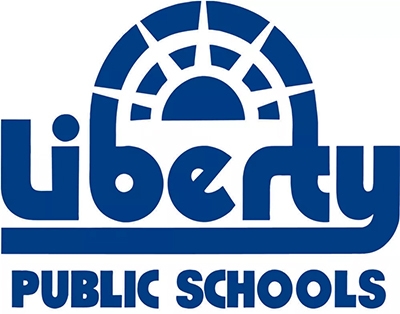Overview
Prior to the pandemic, teachers at one of Liberty Public Schools prototyped a “learning café” model to support student self-directed, competency-based learning. In this model, teachers in second, third, fourth, and fifth grades came together as cross-grade level teams. Student were assessed along a mastery-based progression of mathematics skills, helping to identify areas students had or had not yet mastered. Students could then work independently using a common learning template, working with teachers across the grade-level team depending on where they needed support.
“Prior to the pandemic, we were really ready to roll with what we're calling ‘learning café,’ and we had two sets of second, third, fourth, fifth-grade teachers. They have a dedicated schedule where we're really dropping the walls and building learning based on a continuum or possibly even based on interest and asking kids to go to the class that meets their needs. Then that's replicated on the other side of the pod with another set of second, third, fourth or fifth [grade students]. So pre-pandemic, that was really our plan.” - Dawn Shannon, Innovation and Learning Coach, Liberty Public Schools
The shift to smaller, cohort-based classrooms during the pandemic limited the teachers’ ability to work in large spaces across as many students as planned. However, teachers were still able to pilot the master-based pathways within cohorts.
Approach
Students take a pre-assessment to place themselves on a continuum of mastery in a skill area (“learning intention”). They then work through a personalized plan for developing target skills associated with the intention. The plan asks students to:
Define in their own words what the skill is and means
Choose from a set of activities from a learning and practice playlist, including options to explore the skill through different modalities (videos, tutorials), try practice problems, self-assess again, play a “red card” to get immediate support from a teacher, or ask a friend
Apply the skill by making a video to explain it to others and then uploading it to SeeSaw (a learning management system)
Complete a mastery assessment online
Reflect on their learning, including identifying when and how they felt off track, strategies they used to get back on track, moments of engagement, and identifying means of engagement
While this approach does not give students choice about the pathway itself (which is laid out by teachers), students do get choices in which resources and learning strategies they will use as well as the amount of practice they want to do before completing the mastery assessment.
While the pilot was more limited in scope than planned, the use of SeeSaw has supported opportunities for peer learning even while student cohorts remained small:
“Most of the evidence of learning is given on See-Saw. And then we're starting to now use their evidence to help teach other kids, so as they're submitting their work to show, hey, this is how I know this. Then we're linking it to kids that are coming up to the school so that they are learning from peers even from a distance away.” - Dawn Shannon, Innovation and Learning Coach, Liberty Public Schools
This strategy is a part of TLA's Hop, Skip, Leapfrog release, which explores the concrete ways in which schools and systems pursued student-centered innovation during COVID-19. Explore the full guide to find additional strategies, insights, and resources.
Strategy Resources
Math Pathways
Liberty Public School students in learning cafe classrooms work along pathways based on their mastery... Learn More
